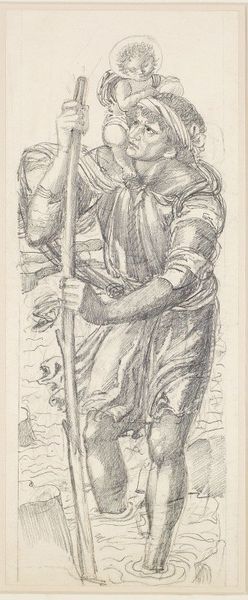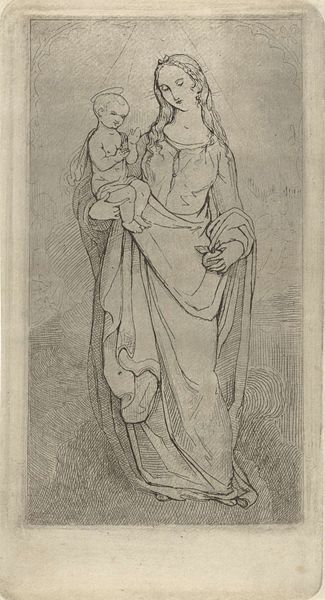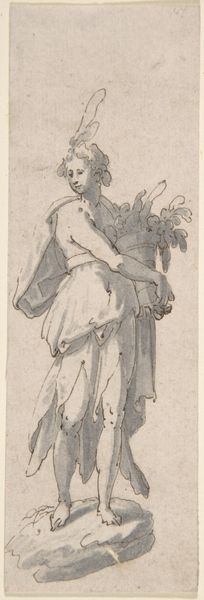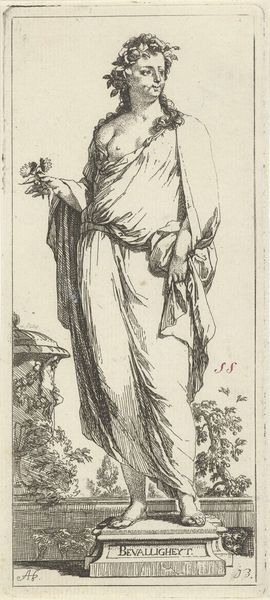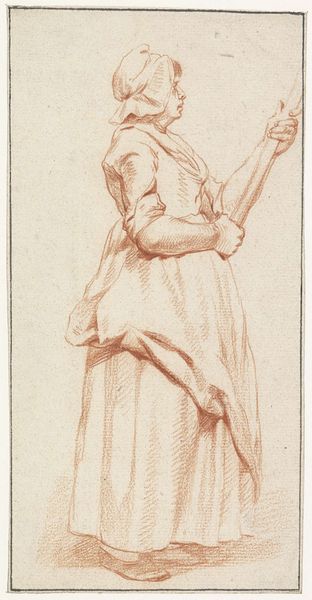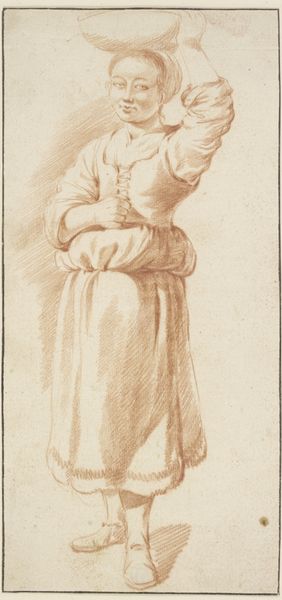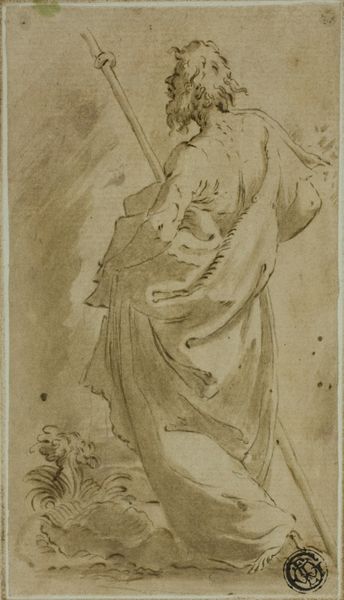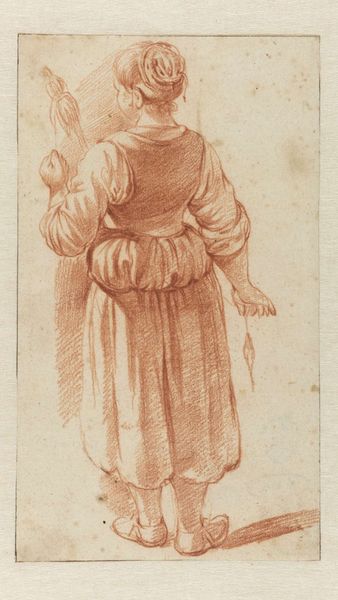
drawing, ink, pen
#
portrait
#
drawing
#
ink drawing
#
11_renaissance
#
ink
#
roman-mythology
#
sketch
#
pen-ink sketch
#
mythology
#
pen
Copyright: Public domain
Curator: This is Albrecht Dürer's "Muse Calliope," a pen and ink drawing from 1494. It's currently held at the Louvre. Editor: My first impression is of its starkness—the delicacy of the lines against the very blank space of the page, that gives this ink sketch a very modern kind of feel. Almost ghostly. Curator: The choice of ink is crucial here; Dürer meticulously controlled its flow, line weight, and texture. It wasn't just about representation. Look at how the varying line qualities create a sense of volume and depth, almost sculptural. It's the skill in manipulating a fairly accessible material like ink to evoke artistic legacy. Editor: Absolutely. And think about Calliope herself, the muse of epic poetry—this is a moment in Renaissance art grappling with classical ideas, the patriarchal construction of the muses, and the question of who has access to knowledge. This image might serve as a comment on artistic license, too, given the ways women’s contributions to art history were systematically obscured. Curator: Indeed. The medium matters; this work exists as a drawing but was preparatory to painting or even prints. Its existence points to production networks. Who ground the pigments? How did Dürer secure patronage for access to expensive ink? What type of labor was involved here? Editor: These are the kinds of issues at the heart of understanding power relations in the art world and more widely across society at the end of the fifteenth century. Durer, for example, clearly references Greek and Roman art styles that exclude women artists and were essentially an exclusively male creative field at this period of time. Curator: The composition itself invites discussion: the figure almost presses against the picture plane, that adds a certain directness, yet Durer presents a god, divinity through something as quotidian and base as a pen mark, or mass reproduction. Editor: Examining “Muse Calliope” from this perspective is a useful means for us to ask wider questions regarding identity and the place of womanhood across culture as it relates to mythology and artistry. Curator: In summary, this seemingly straightforward ink sketch encapsulates broader discussions around material production, access, and the artist's craft within their socio-economic contexts. Editor: And it opens a critical door to discussing representation, identity, and the ongoing project of art historical analysis that reveals systemic bias.
Comments
No comments
Be the first to comment and join the conversation on the ultimate creative platform.

